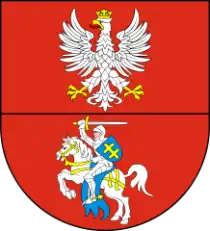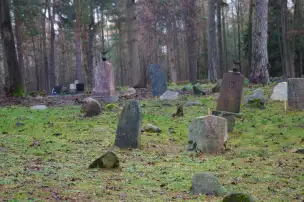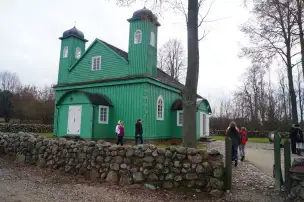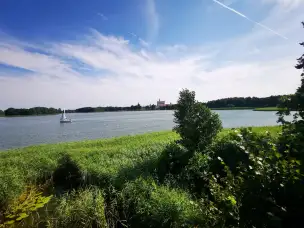The Podlaskie Voivodeship is a truly unique region of Poland in terms of nature, culture, and history—captivating both tourists and lovers of active outdoor recreation. Known for its scenic landscapes and untouched wilderness, Podlasie offers remarkable places that combine natural beauty with rich traditions.
One of the region’s greatest assets is the Wigry National Park, home to Lake Wigry—a true gem among Podlasie’s lakes. With its crystal-clear waters and varied shoreline, the lake is perfect for kayaking, sailing, or fishing. It is surrounded by lush forests and picturesque meadows, inhabited by many species of birds and wild animals. For those interested in history and spirituality, a must-see is the former Camaldolese monastery in Wigry, located on the lake’s shore. This stunning architectural site also offers overnight accommodations, allowing visitors to fully immerse themselves in the peaceful, contemplative atmosphere.
Another highlight is Kruszyniany, a remarkable village that symbolizes the multicultural heritage of Podlasie. It is one of the oldest Tatar settlements in Poland, where Muslim culture and traditions are still alive today. The mosque in Kruszyniany, a square wooden structure with distinctive green walls, is one of the few of its kind in Poland and draws visitors eager to explore the region’s cultural diversity.
The Tatars in Poland
The Tatars who settled in the Polish–Lithuanian Commonwealth largely assimilated over time, especially those who converted to Catholicism. However, those who remained Muslim preserved a distinct identity, and their largest surviving communities can still be found in Podlasie—notably in Bohoniki, Kruszyniany, Sokółka, and Białystok.
At one point, the largest Tatar settlements were actually located in Małopolska, including Kraków and its surrounding areas. In the 17th and 18th centuries, many Tatar families moved to this part of the Commonwealth, particularly after losing their military function or as a result of forced resettlements. Unlike in Podlasie, Tatars in Małopolska more quickly converted to Catholicism and integrated into the local nobility or urban middle class.
In the 18th and 19th centuries, after losing their military status, Tatars in Poland often turned to trade and craftsmanship. Two key trades in which they were especially active were:
- Tobacco trade – Tatars became well-known merchants dealing in the import and sale of tobacco, particularly in the eastern parts of the Commonwealth.
- Tanning – Many engaged in leather processing, which was a profitable craft at the time.
In summary, although the historical Tatar population was once larger in Małopolska, their culture and traditions have survived primarily in Podlasie. As a result, this region is today most closely associated with Poland’s Tatar community.
The Yotvingians (Jaćwingowie)
The Yotvingians were one of the most mysterious Baltic peoples, inhabiting lands that today comprise northeastern Poland, western Lithuania, and southwestern Belarus. They were closely related to the Prussians, Lithuanians, and Latvians, and their language belonged to the Baltic language group, although no complete written records of it have survived. The Yotvingians were known for raids on neighboring territories, especially Mazovia and Rus’.
Today, the Yotvingians are a forgotten people, but traces of their presence can still be found around Lake Wigry—in local place names, archaeological finds, as well as in legends and folklore. Some local tales tell of the spirits of ancient warriors said to roam the forests and lakes surrounding Wigry.





